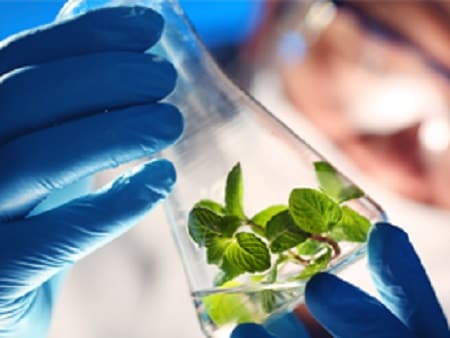Biomanufacturing and Synthetic Biology
Biomanufacturing and Synthetic Biology
Overview

Biomanufacturing applies the principles of engineering and chemical design to biological systems. As these technologies move from small laboratories to large manufacturing platforms, more workers have the potential for exposure. The difference between the traditional chemical-basis versus the biological-basis of these processes and products may pose new risks for workers. The National Institute for Occupational Safety and Health (NIOSH) recognizes the promise of biomanufacturing and is performing research to understand and minimize its potential health and safety risk to the American worker.
What is Biomanufacturing?
Biomanufacturing is the use of biological systems that have been engineered, or that are used outside their natural context, to produce a product. Synthetic biology includes two closely related capabilities which may have wide utility in commerce and medicine. The first of these capabilities is the creation of new genomes, biological pathways, or organisms not found in nature. The second of these capabilities is the redesign of existing genes, cells, or organisms. These capabilities allow for the manufacture of novel products, and also new approaches to existing disciplines (such as gene therapy in healthcare). Biomanufacturing and synthetic biology promise tremendous societal benefits. At the same time, they have raised concerns about potential biosafety risks to workers and to society in general.
What kinds of hazards are related to biomanufacturing?
The biosafety concerns about synthetic biology and its gene-editing tools are similar to the concerns lodged about recombinant DNA technology when it emerged in mid-1970s. For example, workers may be exposed to toxic and hazardous substances of a chemical or biological nature, including bloodborne pathogens. Additionally, the use of synthetic biology in advanced biomanufacturing requires that practitioners not currently involved in biosafety research are educated about risks to workers associated with synthetic biology.
Standard biosafety risk control measures—the use of biological and physical barriers to contain potentially hazardous organisms—remain the mainstay of the largely self-regulated, voluntary approach to worker protection in biomanufacturing and synthetic biology today. However, there is a need to review and enhance current protection measures.
Hazard controls for biomanufacturing and synthetic biology include both extrinsic and intrinsic biocontainment. Extrinsic biocontainment includes biosafety cabinets and other physical containment, good laboratory practices, and education and training of laboratory workers. Intrinsic biocontainment is a more recent type of containment; it seeks to engineer genetic safeguards into the synthetic organism. Its goals include restricting the viability of the engineered organism outside the controlled research environment; preventing transfer of genetic material from a synthetic organism to a natural one; and preventing use of engineered microbes as bioterror agents.
Scaling up synthetic biology from laboratory experiments to industrial biofabrication processes requires the application of prevention-through-design principles to new methods of intrinsic and extrinsic biocontainment and study of their effectiveness, as well as specific occupational safety guidance for synthetic biology processes used in advanced biomanufacturing. Risk assessment for biomanufacturing and synthetic biology can be enhanced by adding health surveillance capability to current efforts by recording, collecting, and analyzing injury and disease experience of the populations of workers exposed to these processes.
What is NIOSH doing to help?
NIOSH recognizes that both laboratory and field research are needed to determine knowledge gaps, develop science necessary to advance understanding in the field, and apply this information to protect workers. Progress and new technologies within the biomanufacturing field bring both opportunity for societal benefits, but also the potential for worker exposure. NIOSH continues to perform both laboratory and field studies, in order to determine the hazards and potential for worker exposures while using emerging technologies such as biomanufacturing.
NIOSHTIC-2 is a searchable bibliographic database of occupational safety and health publications, documents, grant reports, and journal articles supported in whole or in part by NIOSH.
NIOSHTIC-2 search results on Advanced Manufacturing.
